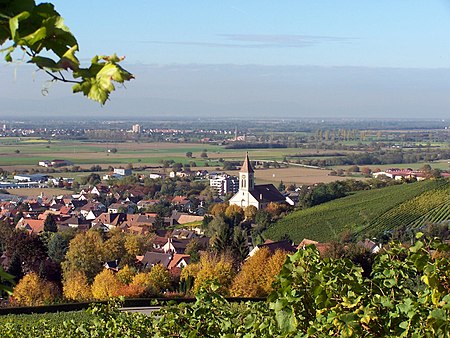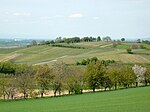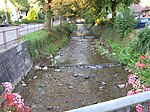Auggen
BadenBreisgau-HochschwarzwaldIncomplete lists from August 2008Municipalities in Baden-Württemberg

Auggen is a municipality in the district of Breisgau-Hochschwarzwald in Baden-Württemberg in southern Germany. It also belongs to a region called Markgräflerland that has both cultural and historical importance. Auggen has attached to it, a smaller administrative part called Hach. Hach lies to the northeast of Auggen. Auggen lies at the southern end of Breisgau. The area is known, amongst other things, for its biodynamic wine.
Excerpt from the Wikipedia article Auggen (License: CC BY-SA 3.0, Authors, Images).Auggen
Am Brunnenbuck, GVV Müllheim-Badenweiler
Geographical coordinates (GPS) Address Nearby Places Show on map
Geographical coordinates (GPS)
| Latitude | Longitude |
|---|---|
| N 47.786944444444 ° | E 7.5961111111111 ° |
Address
Am Brunnenbuck 1
79424 GVV Müllheim-Badenweiler
Baden-Württemberg, Germany
Open on Google Maps







